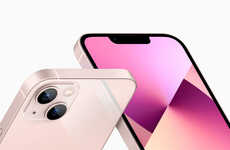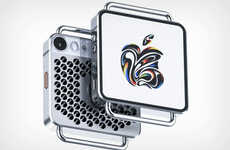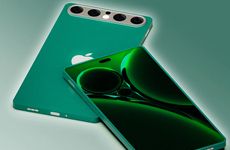
This iPhone Infographic Highlights the Phone's Progress
Michael Hemsworth — November 16, 2012 — Tech
References: quigiam.wix & gadgetose
This iPhone infographic helps to track the revolutionary gadget's progression from conception to the present day.
When first introduced in 2007, the iPhone was primitive by today's standards and only featured a 3-megapixel camera, low 4GB or 8GB storage options and an overall chunky design. The iPhone has steadily grown each year from its humble beginnings to the latest model that totes an eight-megapixel camera, up to 64GB of storage and a painfully thin body. Other areas that this infographic touch on include how the software has evolved, what carriers provide service and where it can be found in the world then and now.
This nifty infographic can help consumers answer the classic question of how a new product is better than an old one.
When first introduced in 2007, the iPhone was primitive by today's standards and only featured a 3-megapixel camera, low 4GB or 8GB storage options and an overall chunky design. The iPhone has steadily grown each year from its humble beginnings to the latest model that totes an eight-megapixel camera, up to 64GB of storage and a painfully thin body. Other areas that this infographic touch on include how the software has evolved, what carriers provide service and where it can be found in the world then and now.
This nifty infographic can help consumers answer the classic question of how a new product is better than an old one.
Trend Themes
1. Smartphone Evolution - Opportunity for disruptive innovation in improving camera technology, increasing storage capacity, and slimming down design.
2. Software Advancement - Potential for disruptive innovation in developing more advanced and user-friendly smartphone software.
3. Global Availability - Opportunity for disruptive innovation in expanding the availability and accessibility of smartphones worldwide.
Industry Implications
1. Technology - Potential for disruptive innovation in the smartphone industry through advancements in camera technology, software, and global expansion.
2. Electronics - Opportunity for disruptive innovation in the electronics sector by pushing the boundaries of storage capacity and design in smartphones.
3. Telecommunications - Potential for disruptive innovation in the telecommunications industry by improving smartphone software and expanding global connectivity.
0.7
Score
Popularity
Activity
Freshness























